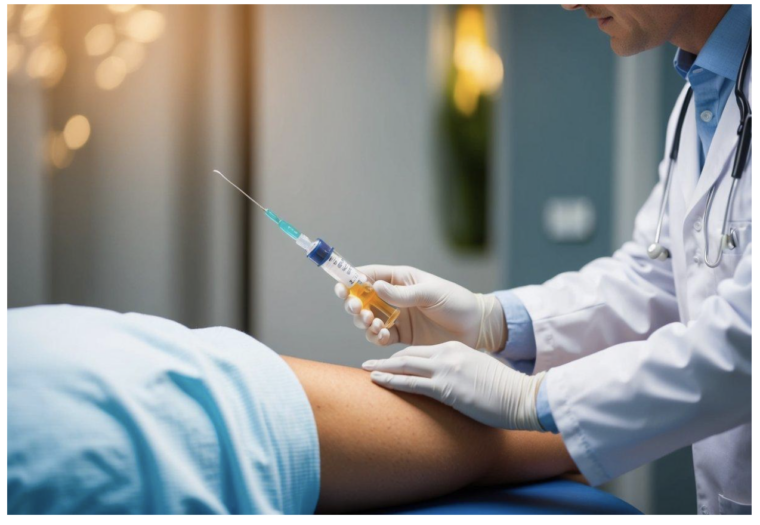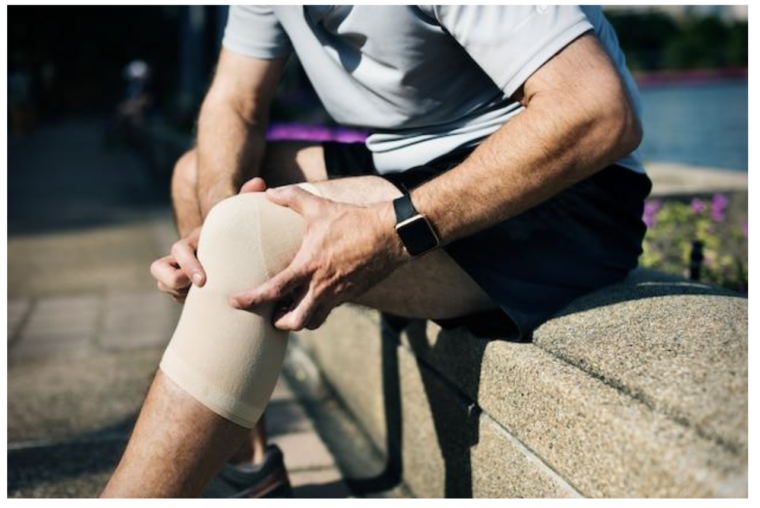Platelet-Rich Plasma Knee Therapy Explained: A Promising Treatment for Joint Pain
Knee pain can limit daily activities and quality of life. I’ve seen many patients struggle with this issue, seeking effective treatments beyond just masking the pain. That’s where platelet-rich plasma (PRP) therapy comes in. PRP knee injections use a concentrated form of a patient’s own blood platelets to potentially speed up healing and reduce inflammation in the knee.

As a regenerative medicine approach, PRP therapy has gained attention for treating knee osteoarthritis and other joint issues. It works by injecting the platelet-rich solution directly into the affected area.
The growth factors in platelets may help stimulate tissue repair and reduce pain. While more research is needed, some studies have shown encouraging results for knee pain relief and improved function.
PRP therapy is generally considered safe since it uses the patient’s own blood components. But like any medical procedure, it’s not without risks. It’s important to discuss the potential benefits and drawbacks with a doctor to decide if it’s right for you. PRP may not work for everyone, and results can vary.
Key Takeaways
- PRP therapy uses a patient’s own platelets to potentially heal knee injuries and reduce pain
- The treatment involves injecting concentrated platelets directly into the affected knee area
- PRP is generally safe but may not be effective for all patients
Understanding Platelet-Rich Plasma (PRP)
PRP is a special blood product with many uses in medicine. It has more platelets than regular blood. These platelets help the body heal.
Basics of Blood and PRP
Blood has four main parts: plasma, red blood cells, white blood cells, and platelets. Plasma is the liquid part. Red blood cells carry oxygen. White blood cells fight germs. Platelets help blood clot and heal wounds.
PRP is made from a patient’s own blood. It has 5-10 times more platelets than normal blood. These extra platelets release growth factors. Growth factors are proteins that help tissues heal and grow.
I find PRP interesting because it uses the body’s own healing power. It’s a natural way to boost recovery.
The PRP Preparation Process
To make PRP, I first take a small amount of blood from the patient’s vein. This is like a normal blood draw. Then I put the blood in a machine called a centrifuge.
The centrifuge spins the blood very fast. This splits it into layers. The platelet-rich layer is in the middle. I carefully remove this layer.
Sometimes I add chemicals to make the platelets release their growth factors. This creates “activated PRP.” The whole process takes about 15-30 minutes.
PRP in Regenerative Medicine
PRP is used to help heal many types of injuries. I often use it for knee problems, like arthritis or torn ligaments. It can also help with tendon injuries, muscle tears, and even hair loss.
When I inject PRP into an injured area, it starts working right away. The platelets release growth factors that:
- Reduce swelling
- Ease pain
- Help new tissue grow
- Improve blood flow
PRP is still being studied, but many patients find it helpful. It’s a promising tool in regenerative medicine. I like that it’s natural and has few side effects.
PRP Therapy for Knee Osteoarthritis
PRP therapy shows promise for treating knee osteoarthritis. I’ve found it can help reduce pain and improve function for many patients. Let’s look at how well it works and compare it to other options.
Efficacy and Success Rate
Studies show PRP therapy is about 60-70% effective for knee osteoarthritis. It seems to work best for mild to moderate cases. In one study, 70% of patients with grade 1-3 osteoarthritis had less knee pain after PRP.
The treatment uses a patient’s own blood cells to speed up healing. This can help aging joints and reduce osteoarthritis symptoms. But results vary between patients.
PRP may not work as well for severe knee osteoarthritis. More research is needed to know the best dose and preparation method.
Comparing PRP to Other Treatments
PRP is an alternative to steroid shots or hyaluronic acid for knee osteoarthritis. Some studies suggest it works better than these options. But the medical community still debates this.
The American Academy of Orthopaedic Surgeons hasn’t fully endorsed PRP yet. They want more proof it helps long-term. Still, many doctors offer it as an option.
PRP has fewer side effects than steroids. It’s also natural since it uses your own blood. But it can be pricier than other shots. More studies are comparing PRP to other knee treatments to see which works best.
Potential Risks and Side Effects of PRP Injections
PRP injections are generally safe, but they do have some risks and side effects to be aware of. I’ll cover the main concerns and how to reduce them.
Understanding the Risks
Pain at the injection site is common after PRP treatment. It usually lasts a few days. Bruising and swelling can also happen. These effects are normal and usually go away on their own.
There’s a small chance of infection. The risk is low because PRP uses your own blood. But any time the skin is pierced, germs can get in.
Tissue damage is rare but possible. The needle could hit a nerve or blood vessel. This might cause bleeding or nerve issues.
Some people have allergic reactions to the local anesthetic used. Signs include itching, rash, or trouble breathing.
Mitigation and Safety Measures
To lower risks, sterile methods are used. The injection area is cleaned thoroughly, and new, clean needles are used for each shot. Allergies are checked before using any numbing drugs.
If the patient is allergic, numbing drugs can be skipped or a different type can be used. Patients are advised to avoid certain medications before PRP.
Blood thinners can increase bleeding risk, and some pain pills may affect how well PRP works.
After the shot, instructions for injection site care are provided to help prevent infection and speed up healing. Ice can help with pain and swelling.
If the patient has diabetes or takes blood thinners, it is important to inform the practitioner. Extra steps might be needed to ensure safety.
Practical Considerations for PRP Treatment

PRP therapy has some key factors to keep in mind before starting treatment. I’ll cover the costs involved and what to expect during recovery.
Cost and Insurance Coverage
PRP injections can be pricey. Most treatments range from $500 to $2,000 per injection. Insurance often doesn’t cover PRP therapy since it’s seen as experimental.
Some clinics offer package deals for multiple injections. This can help lower the overall cost.
I recommend checking with your insurance provider first. A few plans may cover PRP in certain cases. You can also ask about payment plans or financing options at the clinic.
Setting Expectations for Recovery
Recovery from PRP injections takes time. I tell my patients not to expect instant results. Most people start seeing improvements after 2-6 weeks.
The full effects can take up to 3-6 months. During this time, the platelets work to stimulate healing and tissue repair.
You may feel some pain or stiffness right after the injection. This is normal and usually fades within a few days.
I advise my patients to avoid strenuous activities for about 2 weeks after treatment. Gentle movement and physical therapy can help speed up recovery.
Multiple injections are often needed for the best results. A typical course is 3 injections spread over several weeks.
